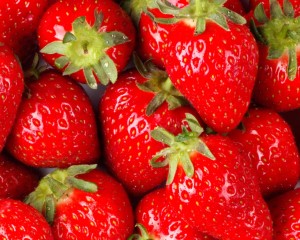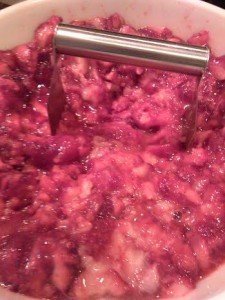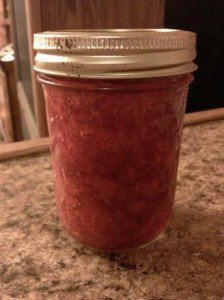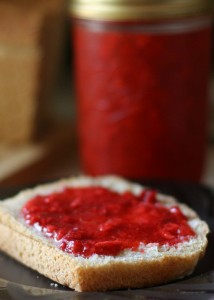Kitchen Scientists: Let's Make Jam!
Hello kitchen scientists. Whenever you mix two or more things together, you’re doing science – specifically, chemistry. In the kitchen, chemists are at work every day! Kitchen science is something we can all do, and usually the results are yummy. So, let’s be chemists, and create something new (and yummy) by mixing a few simple things together! Let’s start with some fresh strawberries.
Before we can measure the strawberries, we have to change their structure. Some people do this with a food processor, but I’d rather use my hands (wash those hands!) and a pastry blender. Remove all the leaves, rinse the berries in cool water, drain them, and put them in a large strong bowl. Some kitchen scientists like to slice the berries with a paring knife before crushing them, but I like to start with whole berries. Grip the pastry blender firmly and start mashing away; this step will take a while, but it makes your entire kitchen smell wonderful! Be careful with this step; the blades on a pastry blender are sharp! Keep your fingers away from the sharp parts; just hold that handle firmly. Crush, crush, crush those berries until you’ve got a bowl full of mash – leave a lot of lumps; those are the best part of your jam.
Now you’ve got something you can easily measure. Get out another large, strong bowl, and measure 1 2/3 cups of mashed berries into it. Add 2 tablespoons of unsweetened, natural apple juice (or natural applesauce) (if there are preservatives in the juice, it won’t work!), and 2/3 cups of sugar. (Stevia works, too.) Mix well and let it “set” for about five minutes. Fill a few clean jars, and start the process over again. Fill the bowl, add apple juice, add sugar, etc. Do this until you’ve used all the berries. Set all your filled jars of jam in a row and take a picture. They’ll be beautiful. Then put a few of them in the refrigerator and the rest in the freezer.
The science here is in the apple juice; it functions with the mashed berries and sugar as “pectin,” which can be purchased as a white or brown powder, but why do that when you can just use something you’ve probably already got around the house? Almost any absolutely natural fruit juice will work, but apple juice leaves the least “flavor footprint” behind; in other words, it won’t flavor the strawberry jam; it will just thicken it. Pectin is extracted from almost any citrus or juicy fruit and is used as a gelling agent. In other words, it helps to bind cells together, which is why your jam is jam and not strawberry topping. The word “pectin” is from Greek, and actually means “curdled or congealed.” Fair enough. Tomorrow, your jam will be ready to spread.
Your strawberry jam will “keep” in the refrigerator for about a month, and in the freezer for about a year. Oh, and this same recipe can be used for almost any fruit without changing the directions. However, I do like to add a tablespoon of fresh lemon juice to all other fruits except strawberries. Your call.
 Jane Goodwin is a professor of expository writing at Ivy Tech Community College, a hands-on science teacher for College for Kids, a professional speaker and writer, and a social media liaison for Steve Spangler Science. She wanted to be a ballerina and an astronaut, but gravity got the better of her.
Jane Goodwin is a professor of expository writing at Ivy Tech Community College, a hands-on science teacher for College for Kids, a professional speaker and writer, and a social media liaison for Steve Spangler Science. She wanted to be a ballerina and an astronaut, but gravity got the better of her.








Leave a Reply
Want to join the discussion?Feel free to contribute!